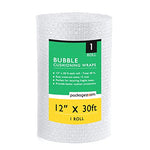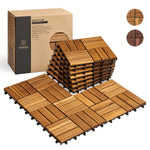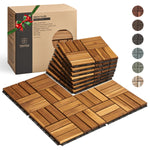You have no items in your shopping cart.
Imagine walking into your home, only to discover a distressing sight—maggots squirming on your floor without any apparent source. The mere thought can send shivers down anyone's spine. Dealing with maggots in your house can be unsettling and may raise numerous questions. How did they get there? What attracts them? How can you get rid of them without resorting to harmful chemicals?
In this in-depth article, we'll delve into the world of maggots on the floor and explore every aspect of this puzzling situation. From understanding their life cycle to implementing effective removal methods, we've got you covered. So, let's roll up our sleeves and tackle the issue of maggots in the house!
Maggots on Floor in House: What Are They and How Do They Get There?
Maggots on Floor in House No Source: Unveiling the Enigma
Maggots are the larval stage of flies, typically belonging to the Diptera order. They are commonly found in decaying organic matter, such as spoiled food, garbage, or dead animals. But what if you spot them on your floor without any apparent source?
Possible Sources of Maggots on the Floor
While it might seem like maggots appear out of thin air, there's usually a source lurking nearby. Potential sources of maggots on your floor could include:
- Hidden food spills or crumbs attracting flies
- Trash cans or garbage disposals with decaying organic matter
- Dead pests or rodents in hidden spaces
- Cracks or gaps in the house that allow flies to enter
- Pet waste left unattended in the house
The Life Cycle of Maggots: Understanding Their Journey
The Birth of Maggots: From Eggs to Larvae
To effectively deal with maggots, it's essential to understand their life cycle. The life cycle of maggots involves four stages:
-
Egg Stage: Adult flies lay eggs near suitable breeding sites, such as decaying matter. Within hours, these eggs hatch into tiny larvae, commonly known as maggots.
-
Larval Stage: This is the maggot's feeding stage. They voraciously consume organic matter for nourishment, growing rapidly and molting several times during this period.
-
Pupal Stage: After reaching a certain size, maggots seek a dry and dark place to pupate. They transform into pupae, where they undergo significant internal changes.
-
Adult Stage: Eventually, adult flies emerge from the pupae, ready to lay eggs and start the cycle anew.
How to Identify Maggots and Differentiate Them from Other Pests?
Maggots often get mistaken for other pests, such as grubs or caterpillars. However, certain characteristics set them apart:
- Maggots lack legs, unlike caterpillars.
- They have a soft, elongated body with a distinct head.
- Maggots move in a wiggling motion, as opposed to the crawling movement of grubs.
If you find suspicious larvae on your floor, you can perform a simple test to confirm if they are maggots. Place them in a container with suitable food for a short time. If they turn into flies within a few days, you're indeed dealing with maggots.
The Nuisance Factor: Why You Should Address Maggots Promptly
Maggots may seem harmless at first, but their presence can lead to a host of problems:
- Hygiene Concerns: Maggots thrive in unsanitary conditions and may spread harmful bacteria, posing health risks to occupants.
- Attracts Other Pests: If maggots are present, it means there's decaying organic matter nearby, attracting other pests like flies and rats.
- Property Damage: In some cases, maggots can cause damage to flooring materials or carpets.
Preventing Maggots: Effective Tips to Keep Them at Bay
Prevention is the best approach when it comes to dealing with maggots on the floor. By taking a few proactive steps, you can significantly reduce the chances of infestations:
-
Maintain Cleanliness: Regularly clean your house, especially the kitchen, and dispose of garbage promptly in sealed bins.
-
Seal Cracks and Gaps: Inspect your house for cracks and gaps that could serve as entry points for flies. Seal them to prevent fly infiltration.
-
Proper Food Storage: Store food in airtight containers and clean up spills or crumbs immediately to avoid attracting flies.
-
Dispose of Pet Waste: If you have pets, dispose of their waste properly and promptly.
-
Regular Inspections: Periodically inspect hidden areas, like under furniture, for potential breeding sites.
DIY Methods for Removing Maggots from the Floor
Acting Swiftly: Immediate Steps to Tackle Maggots
Discovering maggots on your floor can be unsettling, but swift action can prevent the situation from escalating. Follow these DIY steps for removing maggots:
-
Isolate the Area: Seal off the affected area to prevent maggots from spreading to other parts of the house.
-
Use Vinegar: A mixture of vinegar and water can be sprayed on maggots to kill them. This natural solution is safe for household use.
-
Boiling Water: Pour boiling water over maggots to eliminate them effectively.
-
Salt Solution: Sprinkle salt on the maggots to dehydrate and kill them.
-
Boric Acid: A boric acid solution can also be effective in exterminating maggots.
Professional Pest Control: When to Seek Expert Help
Sometimes, the infestation might be too severe for DIY methods to handle. If you notice a persistent or large-scale maggot infestation, it's best to call in professional pest control services. Experienced exterminators can identify the source, treat the affected areas, and provide guidance on preventing future infestations.
Frequently Asked Questions (FAQs):
Q: Can maggots cause health problems? A: While maggots themselves are not harmful, they can carry bacteria that pose health risks, especially if they come into contact with food or living areas.
Q: Are maggots an indication of poor hygiene? A: Maggots are often attracted to unsanitary conditions, but they can also appear due to a variety of factors. Maintaining cleanliness helps prevent maggot infestations.
Q: Can maggots infest carpets? A: Yes, if there's decaying organic matter on or beneath the carpet, maggots can infest it.
Q: How quickly do maggots grow and transform? A: The growth rate of maggots depends on various factors like temperature and food availability. Under ideal conditions, maggots can grow and pupate within a few days.
Q: Can I use chemical pesticides to remove maggots? A: While chemical pesticides can be effective, they should be used with caution, especially in areas where they might come into contact with food or children.
Q: How can I prevent future maggot infestations? A: Maintaining cleanliness, proper food storage, and sealing entry points are essential preventive measures.
Conclusion
Discovering maggots on the floor without any apparent source can be a perplexing situation. However, armed with knowledge about their life cycle, prevention methods, and removal techniques, you can address this issue with confidence. Swift action, regular inspections, and cleanliness are key to keeping your home free from these uninvited guests.
Remember, prevention is always better than cure when it comes to dealing with maggots in the house. By implementing the preventive measures mentioned above and acting promptly when you spot them, you can protect your home from maggot infestations.
Next time you encounter maggots on the floor in your house with no clear source, you'll be well-prepared to handle the situation like a pro!








